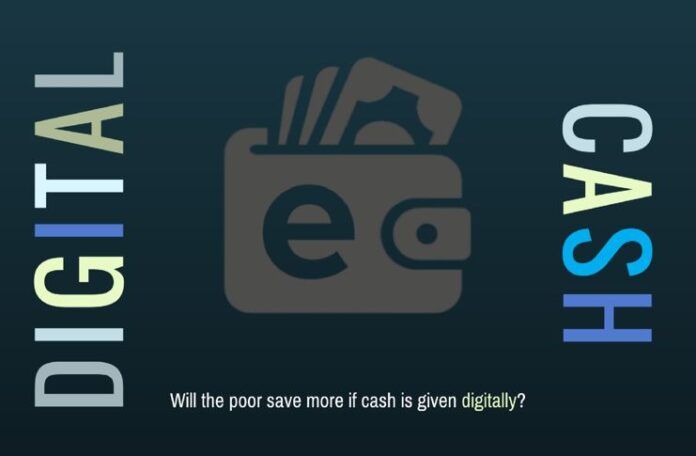
[dropcap color=”#008040″ boxed=”yes” boxed_radius=”8px” class=”” id=””]“C[/dropcap]hodo cash ki baatein, cash ki baat purani”-this jingle came floating on the radio channel that I just switched on. It was a call to embrace digital payments by a leading bank. As somebody who has been frequently doing financial transactions using existing digital domain, the one question that struck me was why I did move over to such cashless or ‘less cash’ economy transactions. The primary reason was the reluctance to carry large sums of cash in hand. Cashless transactions also meant lesser number of visits to bank or ATM. But were these drivers enough to push a large nation into less cash or cashless transactions? Is it need driven? Did the common man and less wealthy want to save time taken to visit banks? Did they have a problem in keeping cash stashed away at home or in the purse?
She told that she preferred some cash, but she would certainly like a part of her salary to be credited to her account so that the temptation to spend is reduced.
I sought some answers from my house help by asking her whether she would like it if I deposited her salary into her account. She told that she preferred some cash, but she would certainly like a part of her salary to be credited to her account so that the temptation to spend is reduced. On a related note, an owner of two estates in Chikmagalur offered to credit the salary of his workers into the bank account, post the demonetization announcement. The workers welcomed the move primarily because they could save up to pay their “chit fund” dues if the money went into their bank account instead of being handed over in cash. The reason that there are several Jan Dhan Accounts without any deposits is probably on account of this. Cash received as wages never finds its way to the bank since it is easier to spend it as cash. The discourse for a less cash economy would find nationwide takers only if it met the sweet spot of need and push making it workable from both ways- money reaches its intended destination – the bank, so that future payments would get routed through banks when necessary.
Almost the entire organized or former employers credit the salary into the bank account of the employee. In fact, the push came from the banking system by offering zero balance accounts as a sweetener for the employees to transact from their salary accounts. But the same may not be true of the informal sector and the individuals who employ people for services such as child care, home care or drivers. These employees usually receive their salary in cash. The other link in the chain are the small and micro businesses who are not geared to receive digital money for their sale transactions.
[dropcap color=”#008040″ boxed=”yes” boxed_radius=”8px” class=”” id=””]C[/dropcap]onsidering the quantum of transactions, associated costs and requirement for an infrastructure, some of the questions that need to be addressed in the context of transitioning the common man and the poor into a less cash economy are as follows:
- Did they want to receive payment digitally?
- Were they willing to use digital money?
- Did they have the infrastructure for the same?
We decided to run a small survey that could throw up some initial pointers if the entire cycle of less cash transactions were to be set into motion. We interviewed and surveyed around 60 individuals to ascertain user preferences about cashless transactions. The respondents belonged to a small urban pocket in Mumbai called Filterpada. Residents mostly belonged to the low income group and lived in small tenements of about 200 square feet. Men earned their living by either selling fish, vegetables and fruits or work as casual labour. Some of the respondents had salaried employment as security in offices or housing societies. Women sold fish or worked as domestic help.
In order to understand the existence of infrastructure for digital receipts, we also interviewed 10 shopkeepers, again from Filterpada. Of the shops, four of them sold grocery, three of them were chemists, one was a stationery and gift shop and the other two were fruit and vegetable stores.
About 73% of the respondents were male and the rest were female.
Willingness to receive digital payments
[dropcap color=”#008040″ boxed=”yes” boxed_radius=”8px” class=”” id=””]W[/dropcap]e first sought responses on the preference for cash versus digital receipts. About 30% of the respondents were already receiving payment through bank accounts. These were mainly people who received monthly salary. When asked whether they preferred to receive their receipts online, 50% of these respondents replied in the affirmative. When asked why they preferred to receive payment online, 77% of the respondents replied that when money was received in the bank, they could not fritter it away and they would be able to save at least a part of it. This lends weight to the premise with which we began, namely that money received into the bank becomes compulsory savings for the poor. 23% of the respondents were of the opinion that online receipts facilitated digital payments.
Of the respondents who preferred cash receipts, 42% told us that they preferred cash because they feared using the ATM or did not wish to go to the bank. 25% of the respondents did not want to waste time on cash withdrawals. Another 25% felt that their income was too meagre to be deposited into a bank and 8% of the respondents felt that they did not need digital receipts because they do not use digital payment facilities.
Willingness to use digital money
On the digital payment front, less than 50% of the respondents owned a smart phone. About 66% of the respondents had not heard of e Wallets and about 25% of the respondents were using them already. Even though almost all the respondents knew someone who used their mobile phone for financial transactions, only 54% of the respondents were willing to learn and adapt to these.
Is there a digital infrastructure?
[dropcap color=”#008040″ boxed=”yes” boxed_radius=”8px” class=”” id=””]I[/dropcap]n order to ascertain whether digital payments were supported by matching infrastructure, we surveyed the neighbourhood shops. Of the shops that were surveyed, only one shop had payment facility through mobile wallets while the remaining nine shops were only accepting cash. They did not know about the Point of Sale (POS) machines either. Pharmacies accepted cheques if the transaction value was significant.
Money which is not received in physical form creates fears about ownership or retrieval, both of which needs to be addressed through information dissemination.
Awareness for digital payment of wages seems to be the starting point in the cashless journey. Once cash is received through bank account, the push for digital payment would become more meaningful. Money which is not received in physical form creates fears about ownership or retrieval, both of which needs to be addressed through information dissemination. As long as wages continue to be received in cash, digital payment may not be an option for many. So the foremost initiatives in the cashless methods should start by encouraging small employers to pay wages online and create an environment for acceptance of the same. Small shops or establishments which carry out cash transactions to stay away from taxation net should be sensitized to move towards digital transactions and any fears of tax penalties should be addressed.
While this survey is not statistically significant, given the small sample size and the randomness of the respondent selection, it certainly underlines the need to look at this exercise from three dimensions- acceptance of digital cash by individuals, acceptance of digital cash by merchants and the payment of digital cash. Unless the three are addressed simultaneously, the transition into a less cash economy may not bear fruits in the intended scale. The push for digital payments should be matched by the pull for digital receipts. The overwhelming perception of people about money deposited into banks standing a better of chance of getting converted into savings can be an effective argument for pushing digital receipts.
To conclude, action is needed on the following fronts-
- Sensitize individuals and informal employers to opt for digital payment of wages and highlight the benefit of receiving money into a bank account and its contribution to savings for the poor
- Highlight the fact that receipts into the bank account also makes the poor eligible for insurance and welfare schemes of the government since they can be easily identified and the schemes can be routed through the bank accounts
- Focus on technology acceptance and remove fear of banking transactions, both online and offline
(With inputs from Siddharth, PGDPM student of NITIE and Vishal Kumar and Tejasvee, PGDIE students of NITIE)
- Part 3: Cashless India – distant dream distinct reality - September 27, 2017
- Part 2: Cashless India-A distant dream or distinct reality? - September 24, 2017
- Part 1: Cashless India-A distant dream or distinct reality? - September 21, 2017











Why would so called ‘ common man’ not want to receive digital payments?
Plenty of employers, pay their daily wage earners paying salary directly to their bank accounts for decades.
Bank accounts are opened for the, they get debit cards, and are taught how to use them.
Internet banking is a step away.
Everybody can learn how use it.
Silly myth being propagated , promoted!
Ground reality. Did you check the literacy rate in India . It is 74%. You need to consider demography too. Over 50% do not have bank accounts.
Do you know the number of wrong debits by banks? I have been at the receiving end with Kotak and ICICI for ATM withdrawals for instance. Only the threat to take them to task works.In the last 1 month it has happened twice.Do you know that only upto Rs 1 lakh is guaranteed by the Gov for each account and safety of one’s money in a bank is questionable?
I am no Congress supporter.I was an initial supporter of Modi. Demonetization does not remove corruption . Only firm action against Gov employees and politicians will make a beginning. I stand for what is correct and justifiable.
Agree. Instead of putting aam admi to hardship, we should go after small and large traders who receive everything only cash and are the biggest supporters Modi.